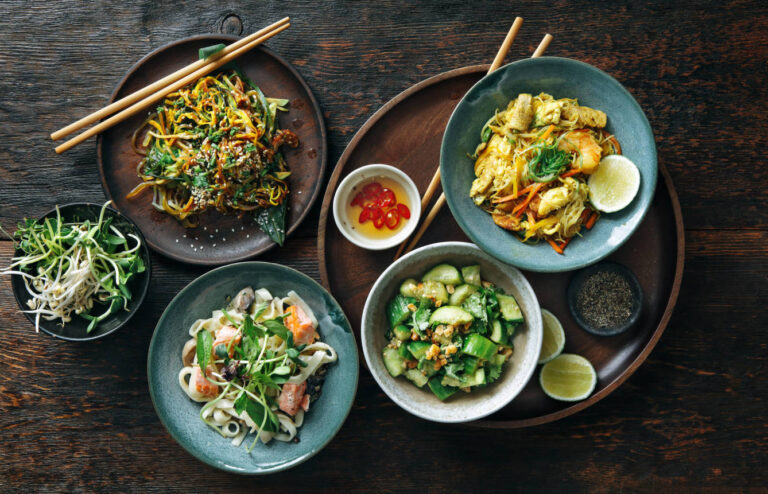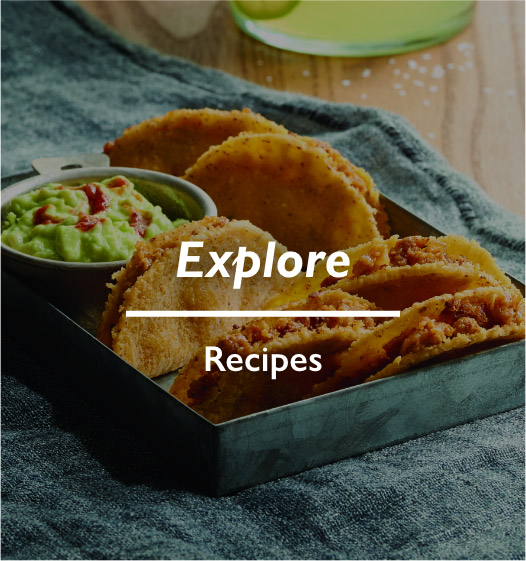
We tend to think of fusion foods as a relatively new trend, ushered in by celebrity chefs and the food truck boom of recent years. The truth is, foods that blend culinary worlds have been around for centuries.
The most well-known example of a “fusion” dish actually has its roots in China, where archaeologists dug up an ancient but perfectly preserved, sealed bowl of noodles. It was the earliest example ever found of what would later become one of the world’s most popular foods – spaghetti!1
Nearly 2,000 years after that Chinese noodle bowl was created, Italian chefs started incorporating noodles into their own dishes. This resulted in Italy taking much of the credit for making noodles popular throughout Europe and the rest of the world1. Today, it’s hard to imagine Italian-inspired foods without some kind of noodles or pasta.
The history of fusion food is so vast that it’s almost impossible to determine where many foods actually originated. “When cultures mix, fusion is inevitable,” said Corrine Trang, author of “Food Lovers Vietnamese: A Culinary Journey of Discovery.”2
Rachel Laudan, food historian and author of “Cuisine and Empire: Cooking in World History,” added, “It’s really hard to invent new dishes, and even harder to invent new techniques. Almost all foods are fusion dishes.”2
Some popular dishes that combine flavors, ingredients, or techniques from two or more cultures include:
- Bánh mì: Typically known as a Vietnamese food, this crunchy, salty, and spicy sandwich is influenced by French colonialism, as seen in many of its common ingredients—pâté, mayonnaise, and baguettes.
- Vindaloo: You’ll find curry vindaloo, a spicy stew, in almost any Indian restaurant, but it actually has British, Portuguese, and Goan origins (Goa is a small state in India). For hundreds of years, Goa was under Portuguese rule, so it’s to be expected that the colonists would have an influence on the cuisine throughout the region.
- Ramen: In the late 1800s and early 1900s, Japan and China fought through several power struggles, with Japan usually winning and claiming many Chinese territories as its own. In the culinary realm, Japan took the traditional Chinese noodle and made it its own as well.
All of the above “fusion” foods resulted from one culture fighting for control over another.2 Today, fusion is more about having fun with ingredients and coming up with Instagram-worthy creations that often go viral and take on a life of their own.

Remember the Cronut® craze of 2013? It was a donut-croissant mashup that became the year’s hottest food trend. Around that same time, we also discovered the ramen burger, donut burger, bacon shake, pizza cake, and other such mashups that enjoyed novelty status for a short period of time.3
The explosion of social media platforms in recent years has been a huge influence on these fascinating but often short-lived food trends. The Cronut lives on4, but its 15 minutes of fame on social media have passed.
According to menu trend analyst Nancy Kruse, not all fusion cuisine is done well, but some chefs, like Norman Van Aken and Wolfgang Puck, went about their menu creations the right way. “They mixed a fundamental understanding of technique with a fundamental respect for ingredients so that when you got to the finished dish it was greater than the sum of its parts.”5
Research shows that 51% of consumers say they want a dish to respect the heritage and culture of the cuisine.6 At the same time, the term “fusion” has increased 75% on food truck menus and 48.7% on fine-dining menus over the past four years.7
So how do these two trends square up against each other? “It’s not really an either/or proposition,” Kruse said. “American consumers are very good at behaving in contradictory ways when it comes to food consumption.”5

Chef Peter Gordon, well-known for merging flavors that defy cultural expectation since the 1990s, gives us five tips for exploring the world of fusion foods:8
- Do your research. Dine at interesting restaurants with unique cuisine to get a feel for elements you could use in your own dishes. Visit food shops for inspiration, and don’t be afraid to ask lots of questions about what’s on the shelves.
- Make the original recipe first, then tweak. Start with what you know, then work on small adaptations. For example, for pumpkin soup, instead of onions, leeks, and cream, try ginger, cardamom, and coconut cream. The philosophy is the same, says Chef Gordon—sauté stuff, add liquid, simmer. It’s what you’re adding in between that changes it from a classic dish to something new.
- Instead of “ingredients,” think “components.” If you’re planning to use a lemon, think about why you chose that particular item and how it will contribute to your dish. If it’s the aroma you’re looking for, you could use something with a bit more interest, like lemon zest, lemongrass, or lemon verbena. If it’s the tanginess, you could sub in a lime, tangerine, orange, or grapefruit.
- Give yourself parameters. Say you know you want to use a duck breast for the main protein, and you want to combine Italian and Japanese flavors. Explore seasonings and components of each type of cuisine—for Italian, it could be polenta or tomato paste. For Japanese, it could be miso or seaweed rice salad.
- Be practical with your changes. Gordon says some tried-and-true recipes haven’t changed in years for good reason. Don’t be afraid to experiment with them, but for some classic foods, especially desserts, the old saying, “if it ain’t broke, don’t fix it” applies.
If you’re starting a recipe from scratch, one way to make it easier is to decide upon the wrapper or the base component first. This could be a wonton wrapper or a premade pork potsticker for Asian-inspired ingredients; or a simple beef enchilada or mini chicken taco for Latin influences.
From there, get creative and experiment with different ingredients using the tips listed above. Premade, frozen foods with a long storage life simplify the process while decreasing waste and labor time.
At Ajinomoto Foods North America, we continuously focus on innovation powered by real-world insights, and look forward to helping restaurants create more fusion dishes in the future. Visit us at AjinomotoFoodservice.com.
Resources:
- https://www.nationalgeographic.com/news/2005/10/4-000-year-old-noodles-found-in-china/
- https://www.smithsonianmag.com/arts-culture/sorry-wolfgang-fusion-foods-have-been-with-us-for-centuries-17238814/
- https://pregelamerica.com/pmag/articles/the-fusion-revolution-the-evolution-of-fusion-cuisine/
- https://gothamist.com/food/the-cronut-is-five-years-old-and-people-are-still-waiting-on-line-for-it
- https://www.nrn.com/opinions/nancy-kruse-bret-thorn-discuss-evolution-fusion-cuisine
- Datassential, Game Changing Solutions 2020
- Datassential, 2020
- https://www.esquire.com/food-drink/food/recipes/a24929/peter-gordon-fusion-tips-0913/





